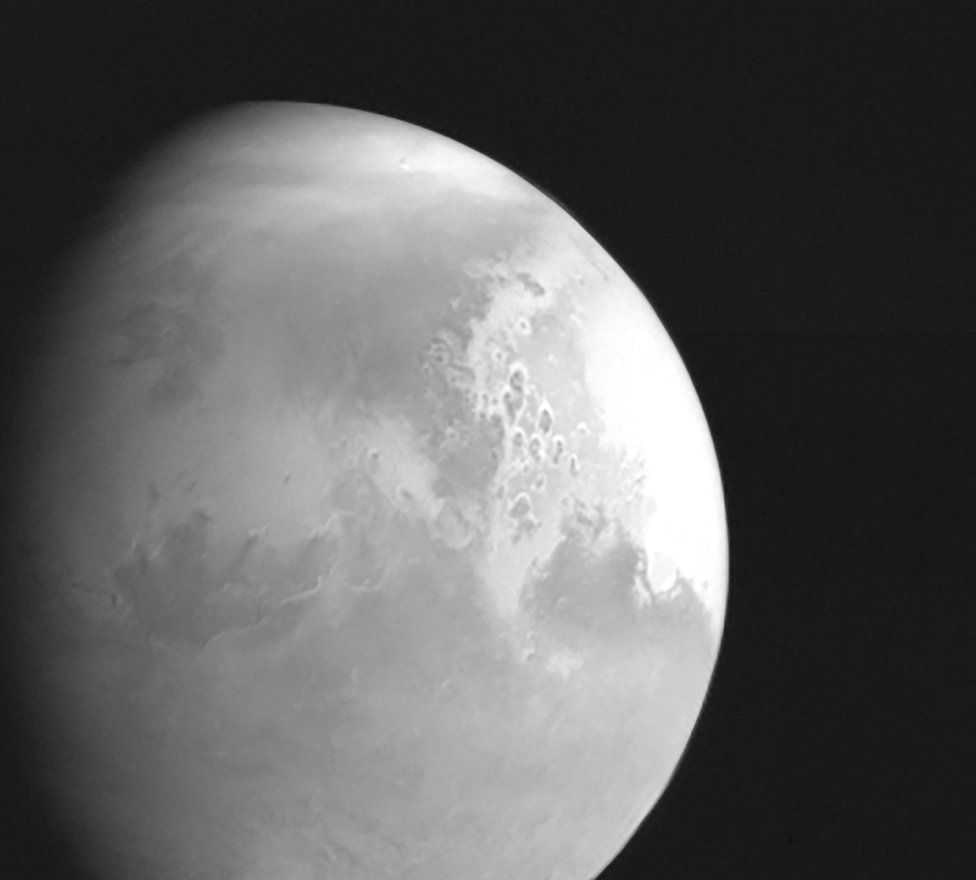China says it has successfully put its Tianwen-1 mission in orbit around Mars.
Tianwen-1 (TW-1) is an interplanetary mission by the China National Space Administration (CNSA) to send a robotic spacecraft to Mars, consisting of an orbiter, deployable camera, lander and rover. The name “Tianwen” means “quest for heavenly truth”. It comes from the long poem of the same name written by Qu Yuan (about 340–278 BC), a poet of Ancient China.
The spacecraft blasted off from Earth on 23rd July 2020 onboard a Long March-5 carrier rocket from Hainan Island, China and currently is now in orbit around Mars, having reached planetary orbit on 10 February 2021.
BTianwen -1’s unmanned probe is currently around 184 million km from Earth and 1.1 million km from Mars, the CSA said Friday, adding that the craft had flown some 197 days and more than 465 million kilometres to reach the planet. According to the scientific team behind Tianwen-1, the probe is “going to orbit, land and release a rover all on the very first try, and coordinate observations with an orbiter.”
“Entering Mars’s orbit is a challenging task. The key is the probe’s autonomous control. Scientists have pre-set an entry program on the probe. When approaching Mars, the probe will finish the orbital entry process by itself. The probe will circle around the planet, which means communication will be difficult once it reaches Mars’s far side,” Wang Chuang, chief designer of Tianwen-1, said.
China is not the only nation to explore the red planet – they join the UAE’s Hope probe which arrived in orbit on Tuesday. Both missions mark a busy month for Mars exploration, culminating with a third endeavour by Nasa. Next week, the US will try to land its Perseverance rover on the Martian surface. Only the US has successfully touched down on Mars – eight times beginning with two Viking missions. A lander and rover are in operation today.
All three Mars missions launched last July to take advantage of the planet’s close alignment with Earth that occurs only every two years. The Chinese mission is it’s most ambitious yet. If all goes as planned, the rover would separate from the spacecraft in a few months and attempt to touch down. If successful China will be the third country to achieve a soft landing on Mars after the Soviet Union and the United States, and the second to deploy a rover.
Tianwen-1 will aim to land on Utopia Planitia, a vast meteor crater in the planet’s northern hemisphere. The basin was previously visited by Nasa’s Viking 2 lander in 1976. Tianwen-1’s aims are almost all scientific. Tianwen-1’s objective is to search for evidence of both current and past life, and to assess the planet’s environment – so yes they are looking for aliens. There has long been speculation that microbial life could exist on Mars, but definitive proof has yet to be found. But searching for life is only a small part of the Chinese mission – the Tianwen rover will also produce surface maps, determine soil composition and look for water ice deposits on the planet.
China hopes to understand the distribution of ice in the region better, in order to support potential future human Mars colonists. The rover will also examine the Martian atmosphere, looking closely at the ionosphere, one of the highest atmospheric layers.
China’s other plans include an asteroid probe named ZhengHe, to bring Martian samples back to Earth later this decade, and a Jupiter exploration mission planned in 15 years’ time. China also hopes to have a lunar research station operated by robots, but the date for that is still a way off in the future. So it looks like we have some interesting times ahead in the space race so watch this space for more information on this in a future update.

